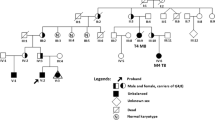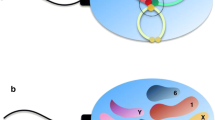Abstract.
Meiotic segregation patterns of chromosomes 3 and 9 were analyzed in sperm of two translocation carriers (t(3;9)(q26.2;q32) and t(3;9)(p25;q32)) by triple-color fluorescent in situ hybridization (FISH) with a telomeric DNA probe in addition to two centromeric probes. The frequencies of each sperm product resulting from alternate or adjacent I, adjacent II and 3:1 segregation in a t(3;9)(q26.2;q32) translocation carrier were 88.35%, 5.44% and 5.94%, respectively. On the other hand, the frequencies of each sperm product in a t(3;9)(p25;q32) translocation carrier were 89.23%, 6.02% and 4.48%, respectively. Of all the sperm products, the frequency of normal or chromosomally balanced sperm in a t(3;9)(q26.2;q32) and a t(3;9)(p25;q32) were 52.49% and 47.25%, respectively. The frequencies of each sperm product resulting from various segregations were different between both carriers and significantly deviated from the expected frequencies. Additional dual-color and triple-color FISH were performed to analyze aneuploidy rates for chromosomes 12, 17, 18, X and Y in order to detect any interchromosomal effect; no evidence of an interchromosomal effect was found.
Similar content being viewed by others
Author information
Authors and Affiliations
Additional information
Electronic Publication
Rights and permissions
About this article
Cite this article
Honda, H., Miharu, N., Ohashi, Y. et al. Analysis of segregation and aneuploidy in two reciprocal translocation carriers, t(3;9)(q26.2;q32) and t(3;9)(p25;q32), by triple-color fluorescence in situ hybridization. Hum Genet 105, 428–436 (1999). https://doi.org/10.1007/s004399900161
Received:
Accepted:
Issue Date:
DOI: https://doi.org/10.1007/s004399900161




